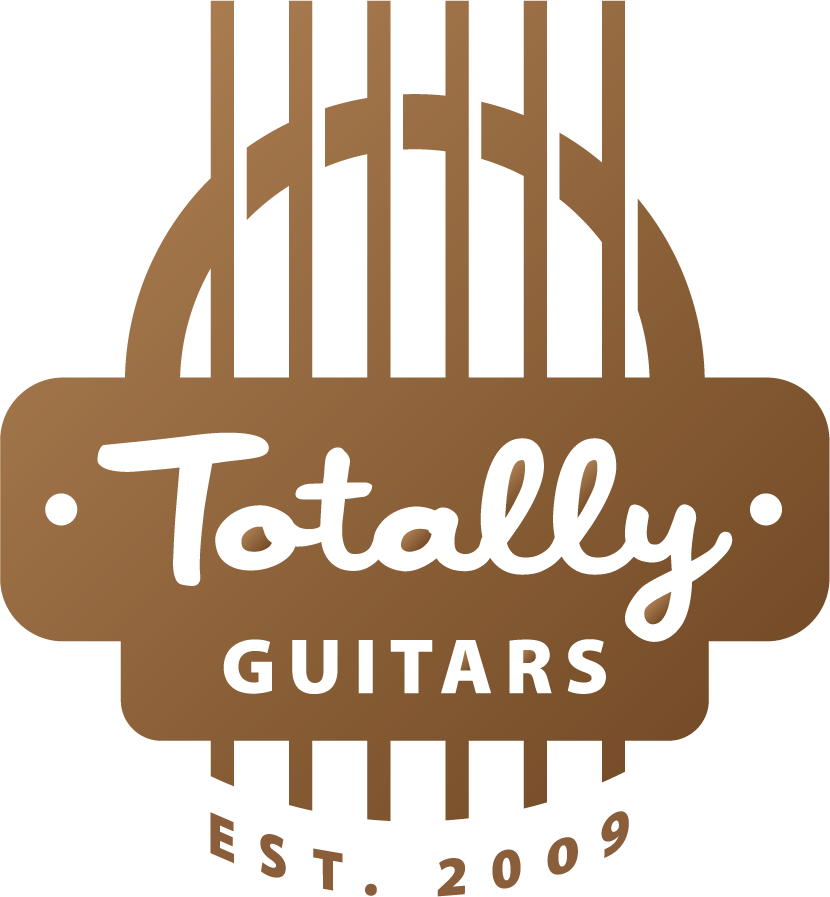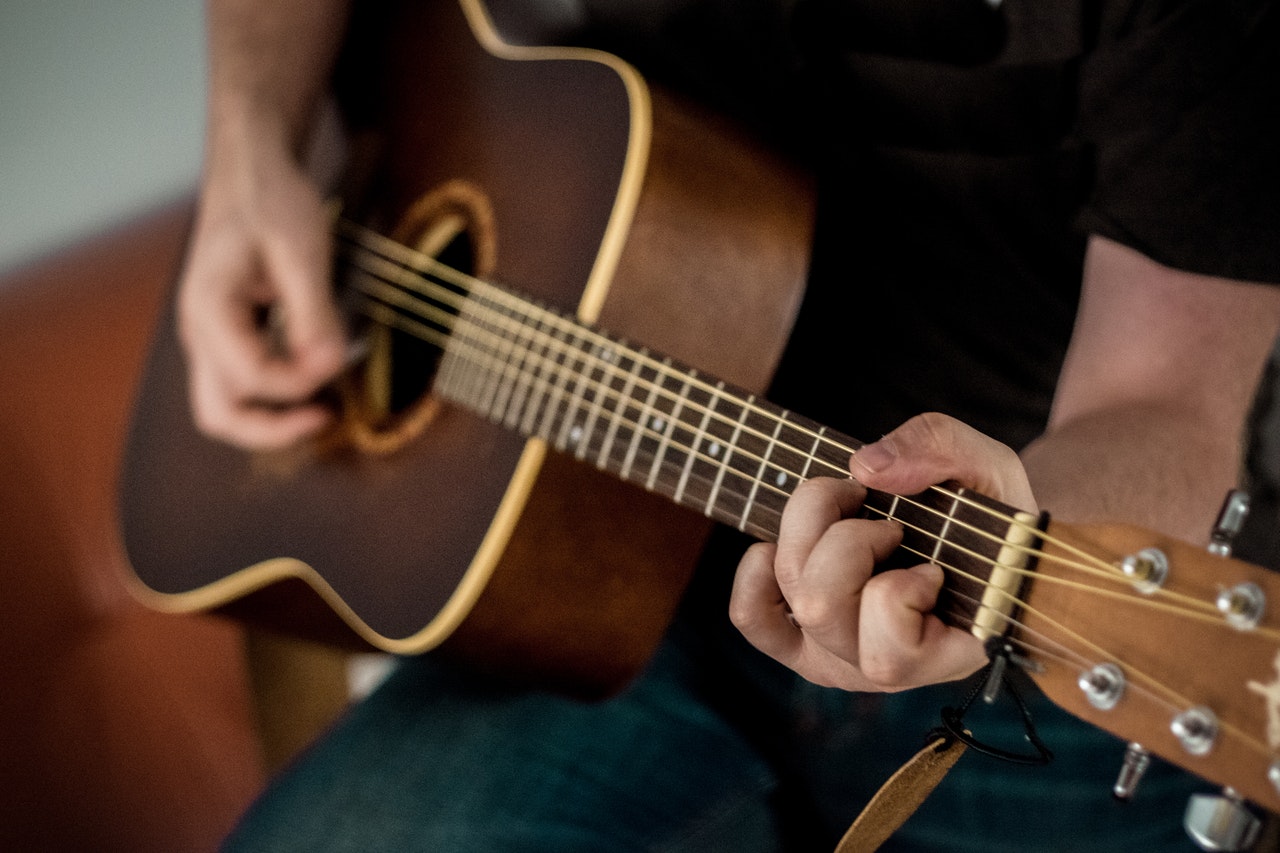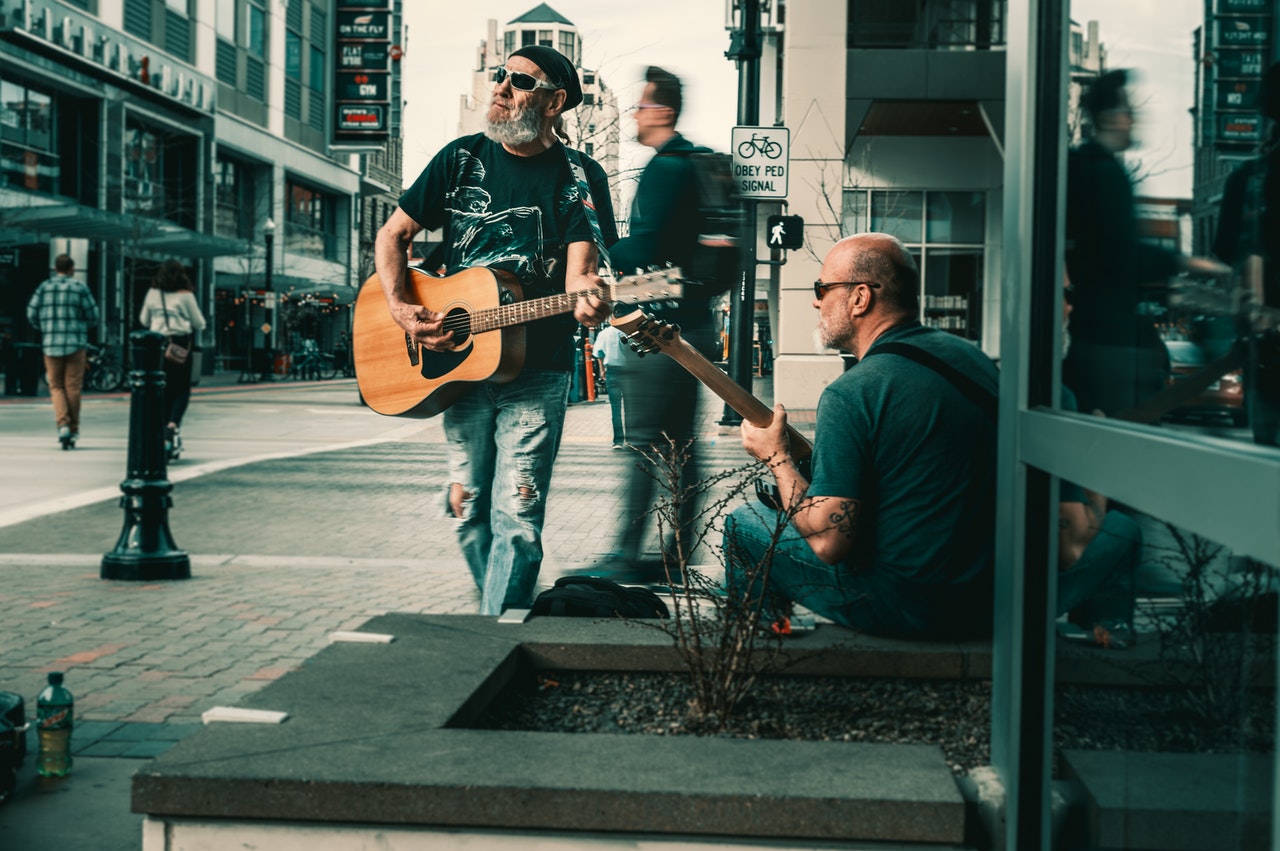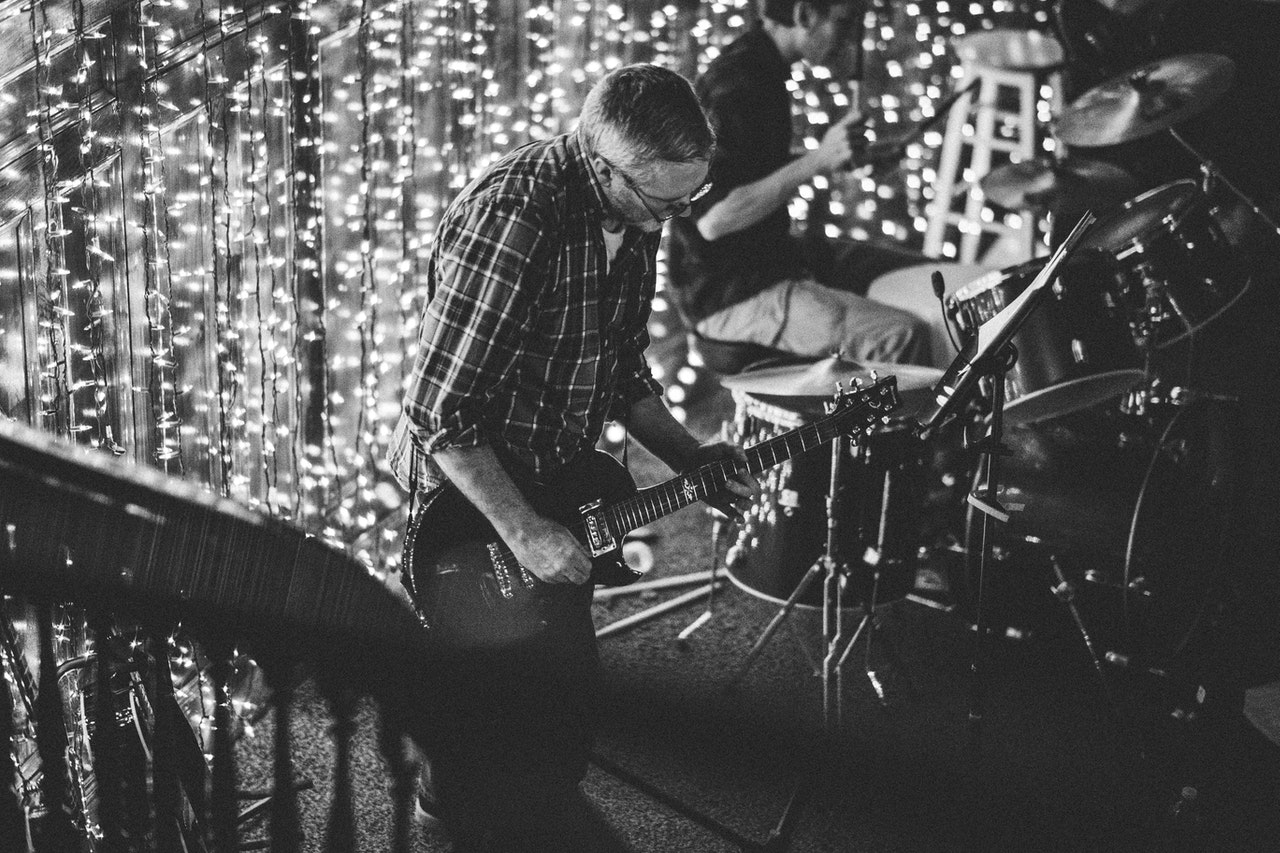Calvin Keys
Share

By: Stephen Rose
 This is a shout out to Calvin Keys, an American jazz guitarist currently residing in the San Francisco Bay Area. Known for his funky deep grooves, this legendary sideman is primarily remembered for two albums he released in the early 1970’s on the underground Black Jazz Records label, including the soul-jazz classic Shawn-Neeq. He has released nine albums under his own name, and has performed as a sideman on dozens of other projects with the likes of Ray Charles and Ahmad Jamal.
This is a shout out to Calvin Keys, an American jazz guitarist currently residing in the San Francisco Bay Area. Known for his funky deep grooves, this legendary sideman is primarily remembered for two albums he released in the early 1970’s on the underground Black Jazz Records label, including the soul-jazz classic Shawn-Neeq. He has released nine albums under his own name, and has performed as a sideman on dozens of other projects with the likes of Ray Charles and Ahmad Jamal.
Calvin Keys was born in Omaha, Nebraska in 1943. His father was a drummer in the local clubs, and his uncle played Delta Blues guitar. Calvin taught himself guitar as a teenager on his uncle Ivory’s Gibson – even though he’d been warned away from the instrument with the threat of a whipping. When his uncle caught him one day, he was so impressed by what the youngster had learned while watching him play that he gave his nephew his prized instrument.
“For the next six months I was up all night with that guitar,” Keys says.
Calvin Keys landed his first paying gig at 17, with an R&B band called Doctor Spider and his Rock and Roll Web. He began touring with sax player Little Walkin’ Willie, then shifted to jazz after discovering the music of Miles Davis and Charlie Christian.
Keys recalls the music scene around Omaha as a talent-laden environment that was constantly enriched by traveling players. In one memorable encounter, blues singer and alto saxophonist Eddie Cleanhead Vinson called him out at a jam session and taught him the chords to the Miles Davis tune “Four”. When Keys returned the next week ready to show off the solo he had developed on the chord changes of “Four”, Vinson called a different Davis piece, “Tune Up”.
“Cleanhead really inspired me to start doing some other kinds of research,” Keys says.
 The guitarist spent most of the ‘60s on the road playing with various organ combos, including brief stints with Jimmy Smith and Jack McDuff and longer runs with Jackie Ivory, Jackie Davis and Frank Edwards – who provided Keys with a strong jazz history foundation.
The guitarist spent most of the ‘60s on the road playing with various organ combos, including brief stints with Jimmy Smith and Jack McDuff and longer runs with Jackie Ivory, Jackie Davis and Frank Edwards – who provided Keys with a strong jazz history foundation.
“Frank turned me on to Duke Ellington and Count Basie and the real music,” Keys says. “He knew all the tunes. After I cut Frank loose, I was after something else, but I wasn’t sure what. But I knew I wanted to get my own band and do my own thing.”
“Earlier in my career, I played with a lot of different organ players. We just jumped and played whenever the situation called for it. That’s what most guitar players did. It caused them to take a step forward because it worked so well with the organ. Especially after you heard Jimmy Smith and Kenny Burrell. Who did not like that guitar with that organ?”
“It was a natural sound,” Keys says, “because the guitar is one of the few instruments that can cut through that organ too.”
[Other notable jazz organists that Keys has played and recorded with include Jimmy McGriff, Jack McDuff, Richard “Groove” Holmes, Big John Patton, Dr. Lonnie Smith, Charles Earland, and Papa De Francesco.]
In 1969 Calvin Keys moved to Los Angeles and became the house guitarist at the Pershing Room with Red Holloway. During this period he also co-led a band with Blue Mitchell, performed with Oscar Brown Jr. at the legendary Memory Lane club, and played with Ray Charles – an initiation and rite of passage for African American musicians coming to Los Angeles at the time. “I worked all over L.A. I wanted to make a statement,” Keys recalls.
In 1971, Calvin Keys signed to Black Jazz Records, an independent label founded in Oakland, CA by jazz pianist Gene Russell to provide artists the opportunity to play alternatives to traditional jazz like funk, free jazz and soul jazz. Black Jazz was known for a series of progressive post-bop and electric jazz LPs released between 1971 and 1975. In addition to Keys’s debut, it issued recordings by Rudolf Johnson (a tenor saxophonist with Ray Charles), Chester Thompson (a keyboardist with Carlos Santana), and Walter Bishop Jr. (a pianist with Charlie Parker). [Black Jazz closed its doors following the death of Gene Russell in 1976.]

Calvin Keys’ first album for Black Jazz was the classic Shawn-Neeq, named after Shanique, his then-newborn niece.
“I write from experience,” said Keys. “I tried to capture the beauty of bringing a brand-new baby into the household. Now if that ain’t love and beauty, what is?”
Shawn-Neeq opens with a rubato introduction on the first track “B.E.” – picking up where the Miles Davis classic ‘In A Silent Way’ left off as an exercise in experimental jazz fusion. The track is a true group collaboration with Larry Nash’s Fender Rhodes electric piano and Owen Marshall’s wailing sax perfectly complementing Key’s fluid guitar lines. Bob Braye on drums and Lawrence Evans on electric bass provide a driving rhythm. Keys and Nash follow the opener by trading solos on the hard-swinging “Criss-Cross;” which gives way to the title track “Shawn-Neeq,” a ballad in waltz time. On “Gee-Gee” the band shifts back into high gear with all three soloists given the opportunity to show off their chops. The album closes with “B.K.” a bookend to the opening track “B.E.”
Shawn-Neeq was produce by Gene Russell, and recorded live with no over-dubs at Hollywood Spectrum Studios in Los Angeles.
“The music released by Black Jazz was very much connected to the Civil Rights movement,” said Keys. “I wanted Shawn-Neeq to be spontaneous, improvised, and reflect the spirit of the times. Looking back after 40 years, I’ll have to say the recording has held up well. It still has appreciators. It’s heartening that the Black Jazz vinyl records are now collectors’ items.”
[In 2011,Tompkins Square re-released “Shawn-Neeq” on 180g vinyl.]
Shortly after the release of Shawn-Neeq, Calvin Keys was hired to tour and record with Ray Charles, whom he would work with off and on until 1995. He traveled in Europe with Charles’s big band on a tour that featured the Count Basie Orchestra and the Oscar Peterson Trio.

In 1973, Black Jazz released Calvin Key’s second album “Proceed With Caution,” also produced by Gene Russell. He shuffled the lineup for this outing resulting in a slightly different spin on this exercise in Miles Davis-inspired jazz-fusion. The title track, “Proceed With Caution,” kicks off the album with a bubbling cauldron of musical ideas; followed by “Tradewinds,” which continues the mystical adventure. The fourth track, “Aunt Lovey,” gets a funky groove on; while “Renaissance” lends an intense sense of urgency to the affair. The album concludes by relaxing into a gentle Bossa Nova beat for the final track, “Night Cry.”
[In addition to his own releases, in 1975 Calvin Keys appeared on Doug Carn’s ‘Adams Apple’ for Black Jazz Records.]
In 1974, after completing a tour with Ray Charles, Keys returned to Los Angeles and began a 20 year association with pianist Ahmad Jamal, recording six albums together and touring the globe.
“He [Ray Charles] was incredible,” Keys remembers. “That was some of the greatest moments in my musical career, working with Ray. And then I got tired of doing that organ thing, I wanted to get into a trio, but I had no idea it would be the Ahmad Jamal Trio.”
Keys spent the next six years as part of Jamal’s quartet with bassist Jamil Nasser and drummer Frank Gant. He left Jamal in 1980 to freelance, but he has returned to work with the pianist many times.
“Calvin is one of my favorite players,” says Ahmad Jamal. “He’s been one of my mainstays for years. He has a tremendous warmth and technical facility in his work, and he’s very serious about what he does. He’s a consummate gentleman and humanitarian.”
[From 1976 to 1980, Jamal and Keys released several albums together, including “Steppin’ Out With a Dream,” “One,” “Intervals,” and “Night Song.” A live recording, “Ahmad Jamal In Paris,” was released in 1996.]
“To me Ahmad [Jamal] was one of the greatest piano players that ever lived,” Keys exclaims. “I had the chance to play with him not only for a few days, I worked with him for a few years. It was incredible. “
In 1975, Calvin Keys relocated to Oakland, CA, and has since recorded numerous solo albums and played with many greats, including Tony Bennett, Taj Mahal, Luther Vandross, M.C. Hammer, Missy Elliott, Pharoah Sanders, Bobby Hutcherson, Sonny Stitt and John Handy. He also began work as music director for jazz piano giant Earl “Fatha” Hines.
[Other artists Keys has performed with include Eddie Marshall, Joe Henderson, Leon Williams, Donald Byrd, Lou Donaldson, Carmen McCrea, Freddie Hubbard, Woody Shaw, Stanley Turrentine, George Coleman, and Jimmy Witherspoon.]
In 1985, Olive Branch Records released a Calvin Keys solo album titled “Full Court Press,” followed a year later by “Maria’s First,” and “Touch” in 2000.
After a successful quadruple-bypass operation in 1997, Calvin Keys returned to music with a renewed sense of purpose. He learned guitar by sitting in with older musicians, a favor he says he wants to return. “What I’m trying to do here is take the experience and the knowledge that I’ve obtained through the years and pass it on to the younger generation.”
“I’m just another brother out here trying to share the love that I’ve learned to express through my music. That’s where I’m at right now. I guess I always have been there, but I’ve never been able to express it like I’m able to now.”
In 1998, Calvin Keys signed with San Francisco-based ‘Wide Hive Records,’ and played on their inaugural release, entitled ‘Dissent.’

In 2001, Calvin Keys returned to the forefront of experimental jazz with “Detours Into Unconscious Rhythms,” his first release as a leader for Wide Hive Records. The album reunited him with former Black Jazz keyboardist Chester Thompson (Santana), and drummer Ron E. Beck (Tower of Power). It also included vibraphonist Roger Glenn (Donald Byrd), percussionist Kenneth Nash (Ahmad Jamal), bassist Jeff Chambers (Ahmad Jamal), and some of the best new young talent from the San Francisco Bay Area. The album was produced by Gregory Howe of the post-fusion collective “Variable Unit.”
According to Keys, “An unconscious rhythm is that song that you hear on the radio that you like, but you don’t know what it is. And you go through the house humming it for the next couple of days or a week until you hear it again and go, ‘Oh, that’s that song.’ It’s been embedded into your subconscious.” He adds, “We all have to take detours in our lives to get to the one.”
Detours Into Unconscious Rhythms, the first release in seven years for Keys, is a well crafted recording that harkens back in both style and substance to his 1971 classic “Shawn-Neeq.” It is a progressive jazz album containing elements of funk, fusion, and hip-hop. The opening track “Potholes” digs a funky hole; followed by “Urban Shaman,” an exercise in trip-hop complete with turntable scratching courtesy of DJ Zeph. A gospel choir raises the ante on the soulful “Detour;” then Roger Glenn’s vibraphone comes to the forefront on the acid-jazz number “Tierra Naranja.” The entire band gets a workout on the progressive “Landing Pad;” then Keys updates an old chestnut with “Aunt Lovey ’99.” The album finishes on a high note with the sweet groove of “Perfection is Instant Death.”
*
 |
 |
In 2003, Lifeforce Jazz released two live albums “Standard Keys,” and “An Evening With Calvin Keys.”
Standard Keys, a straight-ahead jazz release in a trio setting, was recorded in 1992 at the Big Basin Academy of Art and Music in Saratoga,CA. Calvin Keys stretches out on the first two tracks, an original called “Abdullah,” and McCoy Tyner’s “Blues On The Corner.” On the third track, he slows it down with a delicate interpretation of Antonio Carlos Jobim’s “Onced I Loved;” then jumps into a bob-ish reading of Miles Davis’ “The Theme.” The trio swings hard on “Willow Weep For Me;” then closes out with an inspired version of Freddie Hubbard’s “Little Sunflower.”
 In 2006, Gregory Howe returned as the guiding hand behind Calvin Key’s second Wide Hive release, Vertical Clearance. The album reunited Keys with Black Jazz pianist Doug Carn, and also featured jazz veterans Phil Ranelin, Sonny Fortune, Roger Glenn, and Babatunde in its lineup. Much more experimental than its predecessor, Vertical Clearance contains a variety of old and new-school arrangements from Latin and Funk to Hip-Hop and Acid Jazz. In addition to Keys’ soul-groove guitar lines several tracks feature keyboards and horns. Highlights include “Unresolved Daydream;” the dreamy “Proceed With Caution ’06;” and the acid-jazz number “Secaucus S. Rutherford.” Roger Glenn’s vibes are featured on “Maximum Height;” while Doug Carn’s organ intertwines with a Fender Rhodes electric piano on “Blue D.” The album concludes with “Drunk Monk,” a track with a funky horn arrangement that could have been borrowed from The Roots.
In 2006, Gregory Howe returned as the guiding hand behind Calvin Key’s second Wide Hive release, Vertical Clearance. The album reunited Keys with Black Jazz pianist Doug Carn, and also featured jazz veterans Phil Ranelin, Sonny Fortune, Roger Glenn, and Babatunde in its lineup. Much more experimental than its predecessor, Vertical Clearance contains a variety of old and new-school arrangements from Latin and Funk to Hip-Hop and Acid Jazz. In addition to Keys’ soul-groove guitar lines several tracks feature keyboards and horns. Highlights include “Unresolved Daydream;” the dreamy “Proceed With Caution ’06;” and the acid-jazz number “Secaucus S. Rutherford.” Roger Glenn’s vibes are featured on “Maximum Height;” while Doug Carn’s organ intertwines with a Fender Rhodes electric piano on “Blue D.” The album concludes with “Drunk Monk,” a track with a funky horn arrangement that could have been borrowed from The Roots.
In 2005, Silverado Records released “Calvinesque,” followed in 2007 with Key’s most recent release “Hand Made Portrait.”
In 2007, fellow Midwesterner Pat Metheny wrote the song “Calvin’s Keys” and included it on his album, “Day Trip”. Pat Metheny has been a big fan of Calvin Keys since the start of his own career and calls him “the real deal.” [Metheny has also honored James Taylor and Jaco Pastorius in a similar fashion.]
In July 2011, Calvin Keys was joined by fellow Black Jazz label mates, Henry Franklin and Carl Burnett, for a tribute concert to Gene Russell, titled “Heroes of Black Jazz.” The show was held at the Barbara Morrison Performing Arts Center, in the Leimert Park neighborhood of Los Angeles. They were joined on stage by George Harper and Bobby Pierce.
Also in 2011, Calvin Keys handled the guitar parts on jazz organist Brian Ho’s album “Organic.”
“He’s learning, he’s going to get better too, so I been helping him as much as I can,” said the 70-year old guitarist of his new keyboard accompanist. “That’s what we gotta do, we got to pass it on to these youngsters. He gives me a lot of respect, and I love him and work with him as much as I can.”
“There’s a certain torch being passed around,” say Keys. “That torch was passed to me at some point in my life, and I’m trying to keep it burning by handing it on to some of the youngsters.”
Calvin Keys speak frequently of the Creator, reflecting on his religious faith. “Three words are important to me, ‘God is love. Love is God.’ This inspires my music. God gave me and blessed me with this talent to play guitar. The Creator is guiding me,” Keys says. “That’s why I want to spread this music all over the world. The music has a message, and I’m still searching for the right note.”
Calvin Keys plays a Heritage Golden Eagle hollowbody plugged into a 100-watt Polytone Mini-Brute IV with one 15” Celestion speaker. He uses .012-.056 gauge D’Addario strings, and gets his organic tone from a combination of thumb, fingers, and a triangular Dunlup heavy pick. “That’s the only setup I’ll ever need,” he says. “I’ll add a little reverb on the Polytone, and that’s more than enough for me.”
Videos
Joe Henderson & Calvin Keys (FEB 1984)
httpv://www.youtube.com/watch?v=0P2OYTSuMbo&feature=related
I’ll Remember April (JUN 2006)
httpv://www.youtube.com/watch?v=7cntAmdXycQ&feature=related
March To Census (San Jose, APR 2010)
httpv://www.youtube.com/watch?v=LhPB2ej1lzI&feature=related
Brian Ho w/Calvin Keys (MAY 2010)
httpv://www.youtube.com/watch?v=N8r02F4HNBo&feature=related
Blue Monday Jazz Jam (JUN 2011)
httpv://www.youtube.com/watch?v=9I0TebY5DAk&feature=endscreen
Gumbo on the Green Fest (JUL 2011)
httpv://www.youtube.com/watch?v=7oJWulWPDak&feature=related
PBS Promo
httpv://www.youtube.com/watch?v=V_axS89sWTY&feature=related










